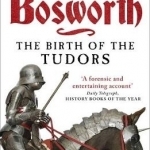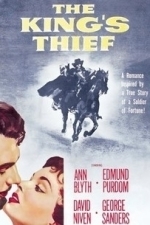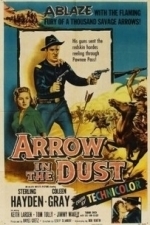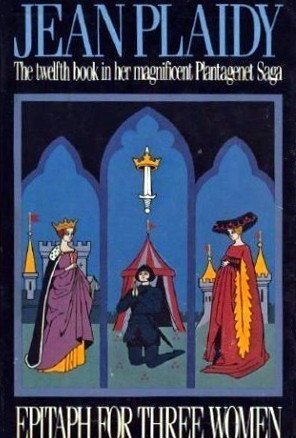Search

Bosworth: The Birth of the Tudors
Book
Richard III and Henry Tudor's legendary battle: one that changed the course of English history. On...
graveyardgremlin (7194 KP) rated Epitaph for Three Women (Plantagenet Saga, #12) in Books
Feb 15, 2019
<b>2.5 stars
Epitaph for Three Women</b> turned out to be far less about these three women than I was led to believe by the book's description. Broken into three parts titled Katherine of Valois, Joan of Arc, and Eleanor of Gloucester, only Joan, or Jeannette rather, has an actual story that follows her path in life. The other two are background players to the politics going on at the time, especially those concerning the Dukes of Bedford and Gloucester and England's fight for France. Whenever Katherine enters the picture, it's all light, airy, and extremely romanticized, especially in regards to Owen Tudor. For most of the book they live a totally idyllic life that doesn't feel realistic in the least. Eleanor Cobham is portrayed as a scheming, crown-hungry social climber who proves far too trusting of witches and soothsayers. Isabeau of Bavaria fares even worse and I got tired of the constant references to how whorish she was. Since this was written, historians have looked into the accuracy of her reputation and dismissed certain facets as untrue. Still, this isn't a completely bad book. Putting aside Katherine's storyline where she only made cameo appearances anyway, I enjoyed the first part the most. Not knowing much about this period, the history was fascinating. The second featuring Jeannette was my least favorite, but I lay full blame at my feet because I have just never cared for Joan of Arc's story, so found most of this part boring. While there was some interesting information in the book, I didn't love the book but it's an easy introduction to this particular time.
For more information on Eleanor Cobham, I recommend Susan Higginbotham's guest <a href="http://madameguillotine.org.uk/2012/09/03/the-duchess-downfall-eleanor-cobham/">post</a>; at Madame Guillotine.
Originally Reviewed: October 17, 2012
Received: Local Library
Epitaph for Three Women</b> turned out to be far less about these three women than I was led to believe by the book's description. Broken into three parts titled Katherine of Valois, Joan of Arc, and Eleanor of Gloucester, only Joan, or Jeannette rather, has an actual story that follows her path in life. The other two are background players to the politics going on at the time, especially those concerning the Dukes of Bedford and Gloucester and England's fight for France. Whenever Katherine enters the picture, it's all light, airy, and extremely romanticized, especially in regards to Owen Tudor. For most of the book they live a totally idyllic life that doesn't feel realistic in the least. Eleanor Cobham is portrayed as a scheming, crown-hungry social climber who proves far too trusting of witches and soothsayers. Isabeau of Bavaria fares even worse and I got tired of the constant references to how whorish she was. Since this was written, historians have looked into the accuracy of her reputation and dismissed certain facets as untrue. Still, this isn't a completely bad book. Putting aside Katherine's storyline where she only made cameo appearances anyway, I enjoyed the first part the most. Not knowing much about this period, the history was fascinating. The second featuring Jeannette was my least favorite, but I lay full blame at my feet because I have just never cared for Joan of Arc's story, so found most of this part boring. While there was some interesting information in the book, I didn't love the book but it's an easy introduction to this particular time.
For more information on Eleanor Cobham, I recommend Susan Higginbotham's guest <a href="http://madameguillotine.org.uk/2012/09/03/the-duchess-downfall-eleanor-cobham/">post</a>; at Madame Guillotine.
Originally Reviewed: October 17, 2012
Received: Local Library
Deborah (162 KP) rated Bosworth Field and the Wars of the Roses in Books
Dec 21, 2018
For starters, the book is entitled Bosworth Field & the Wars of the Roses. Discussion of Bosworth is pretty much restricted to one short chapter and about the first third of the book is taken up with an over-detailed account of the events leading up to the Wars of the Roses; if Rowse is concerned about 'Wars of the Roses' being a misnomer, perhaps he should look to his own title! Yes, the events from the disposition of Richard II in 1399 and the usurpation of his throne by Bolingbroke do have an impact on later events, but a third of the book? Do we really need to know the ins and outs of Sir John Oldcastle's Lollard leanings - I fail to see how this is relevant.
Rowse's chapter on Shakespeare must be at least as long, if not longer, than his chapter on Bosworth. The fact that he obviously sincerely believes that one can gain a credible understanding of history from Shakespeare cycle of plays was almost enough to make me drop the book in astonishment! How can one take him seriously?!
He is also ready to give every credit to the supposed work of More. Even here he falls down by claiming that the bodies of the 'princes in the tower' were discovered in the exact place More said! If you read this work you'll find that the opposite is true - they are in the exact place More said they were NOT! The fact that there isn't a shred of evidence that anyone killed the two princes is evidently a small matter to Rowse. He mentions the great turncoat, Sir William Stanley (at this point step-uncle to Henry Tudor) being executed s a result of the Perkin Warbeck debacle, but fails to mention that Sir William is imputed to have said that if Warbeck really was Richard of York, he would not fight against him. Of course he doesn't mention this - he has to keep reminding us that EVERYONE believed Richard III guilty! Really, a credible historian should not pick and choose their facts - something Alison Weir is also very fond of doing.
Another point is that he is quite happy to accept that Katherine of Valois really did marry Owen Tudor, but cannot countenance the much more credible suggestion that Edward IV was married to Eleanor Butler (nee Talbot), who is not even mentioned. He harps on about the morality and piety of the Lancastrians (despite the Beauforts being conceived in double adultery - further hypocrisy) but when Richard III founds a chantry or offers some concession to a religious house that Rowse concludes it much be down to his uneasy concience.
So, overall, not a book I can recommend in the least. He may try to convince us that his unbending traditionalist view is 'sensible' and 'common sense' but anyone with a little knowledge of the subject will see it as laughably absurd and highly prejudiced.
Rowse's chapter on Shakespeare must be at least as long, if not longer, than his chapter on Bosworth. The fact that he obviously sincerely believes that one can gain a credible understanding of history from Shakespeare cycle of plays was almost enough to make me drop the book in astonishment! How can one take him seriously?!
He is also ready to give every credit to the supposed work of More. Even here he falls down by claiming that the bodies of the 'princes in the tower' were discovered in the exact place More said! If you read this work you'll find that the opposite is true - they are in the exact place More said they were NOT! The fact that there isn't a shred of evidence that anyone killed the two princes is evidently a small matter to Rowse. He mentions the great turncoat, Sir William Stanley (at this point step-uncle to Henry Tudor) being executed s a result of the Perkin Warbeck debacle, but fails to mention that Sir William is imputed to have said that if Warbeck really was Richard of York, he would not fight against him. Of course he doesn't mention this - he has to keep reminding us that EVERYONE believed Richard III guilty! Really, a credible historian should not pick and choose their facts - something Alison Weir is also very fond of doing.
Another point is that he is quite happy to accept that Katherine of Valois really did marry Owen Tudor, but cannot countenance the much more credible suggestion that Edward IV was married to Eleanor Butler (nee Talbot), who is not even mentioned. He harps on about the morality and piety of the Lancastrians (despite the Beauforts being conceived in double adultery - further hypocrisy) but when Richard III founds a chantry or offers some concession to a religious house that Rowse concludes it much be down to his uneasy concience.
So, overall, not a book I can recommend in the least. He may try to convince us that his unbending traditionalist view is 'sensible' and 'common sense' but anyone with a little knowledge of the subject will see it as laughably absurd and highly prejudiced.



